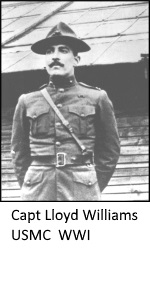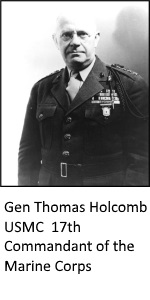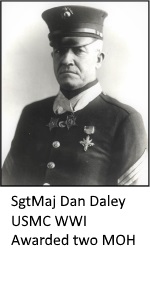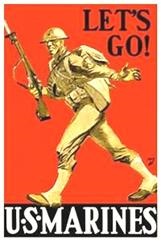Brigade de Marine in honor of the incredible sacrifices and fierce struggles there. The members of the 4th Marine Brigade were also awarded the French Croix de Guerre.
Although a victory for the Americans, the Battle of Belleau Wood exacted a heavy toll on the 4th Marine Brigade. Of its complement of 9,500 men, the brigade suffered 1,000 killed in action, and 4,000 wounded, gassed, or missing equaling a 55 percent casualty rate. The supporting 2nd Regiment of Engineers lost another 450 casualties of its assigned unit strength of 1,700 soldiers. During the three weeks of fighting, Thomas Holcomb’s 2nd Battalion alone suffered a shocking 764 casualties out of a paper strength of 900 marines. On June 6 alone, his unit started across the wheat field with two companies with some 500 marines. After wrenching control of Bouresches, only 200 of Holcomb’s men remained able to repel German counterattacks. This represented a 60-percent casualty rate, which matched the rates of earlier battles in World War I. Not to put too grim a face on this high figure, but Holcomb’s career as a future commandant of the Marine Corps may easily have ended in obscurity, and the heroic memories of the wheat field would have been for naught if the remnants of the 2nd Battalion had not held Bouresches.
Surviving the rest of the World War I, Holcomb continued to rise through ranks until being named the seventeenth commandant of the Marines Corps in December 1936. He shepherded the Corps through the last years of the Great Depression, managed its mobilization, and directed the Corps’ first two years of the Pacific War. In this time, the Corps expanded from 17,000 marines in 1936 to 385,000 by Holcomb’s retirement in December 1943. Battlefield success at Belleau Wood merited an immortal place in Marine Corps history and lore. Similar observations can be made about the other famous battles of Fallujah, Khe Sanh, Chosin, and Iwo Jima, all of which should be sobering reminders that victorious ends have often required bloody means.
These points of pride notwithstanding, all the battles left other indelible marks on those marines fighting in them that exceeded celebratory and triumphalist tones. Beyond Marine Corps lore, the Battle of Belleau Wood represented a substantive step in the organization’s maturation from shipboard guard or constabulary forces of the 19th century into the multi-purpose force-in-readiness of the 20th and 21st centuries. This battle and the others later in World War I gave the Marines invaluable experiences of prolonged combined arms operations in modern warfare.
Several future Marine Corps senior leaders saw action at Belleau Wood, including future commandants such as John Lejeune, Clifton Cates, Lemuel Shepherd Jr., Wendell Neville, and Thomas Holcomb, as well as marines who later attained flag rank such as Roy Geiger, Charles Price, Holland Smith, Keller Rockey, and Merwin Silverthorn. In one extraordinary case, Gerald Thomas rose through the ranks from sergeant at Belleau Wood in 1918 to become lieutenant
general and assistant commandant of the Marine Corps from 1952 to 1954. These marines became a group of veterans famously known as the “Old Breed” during the decades after World War I ended.
The future flag officers gleaned many vital lessons from serving in France, thereby recognizing that the Marine Corps needed effective training in appropriate weapons and tactics, relevant doctrines for those weapons and tactics, planning for operational roles for the Marine Corps in future conflicts, military education of Marine officers in the art of war, suitable force structures to perform particular missions, and reorganization of the U.S. Marine Corps in structures similar to the French General Staff. Consequently, Belleau Wood has maintained not only a legacy as an iconic battle but also as the first of several learning laboratories for those Marine officers who eventually led their Corps to victory in World War II.
[Source: War On the Rocks David John Ulbrich June 2018]



